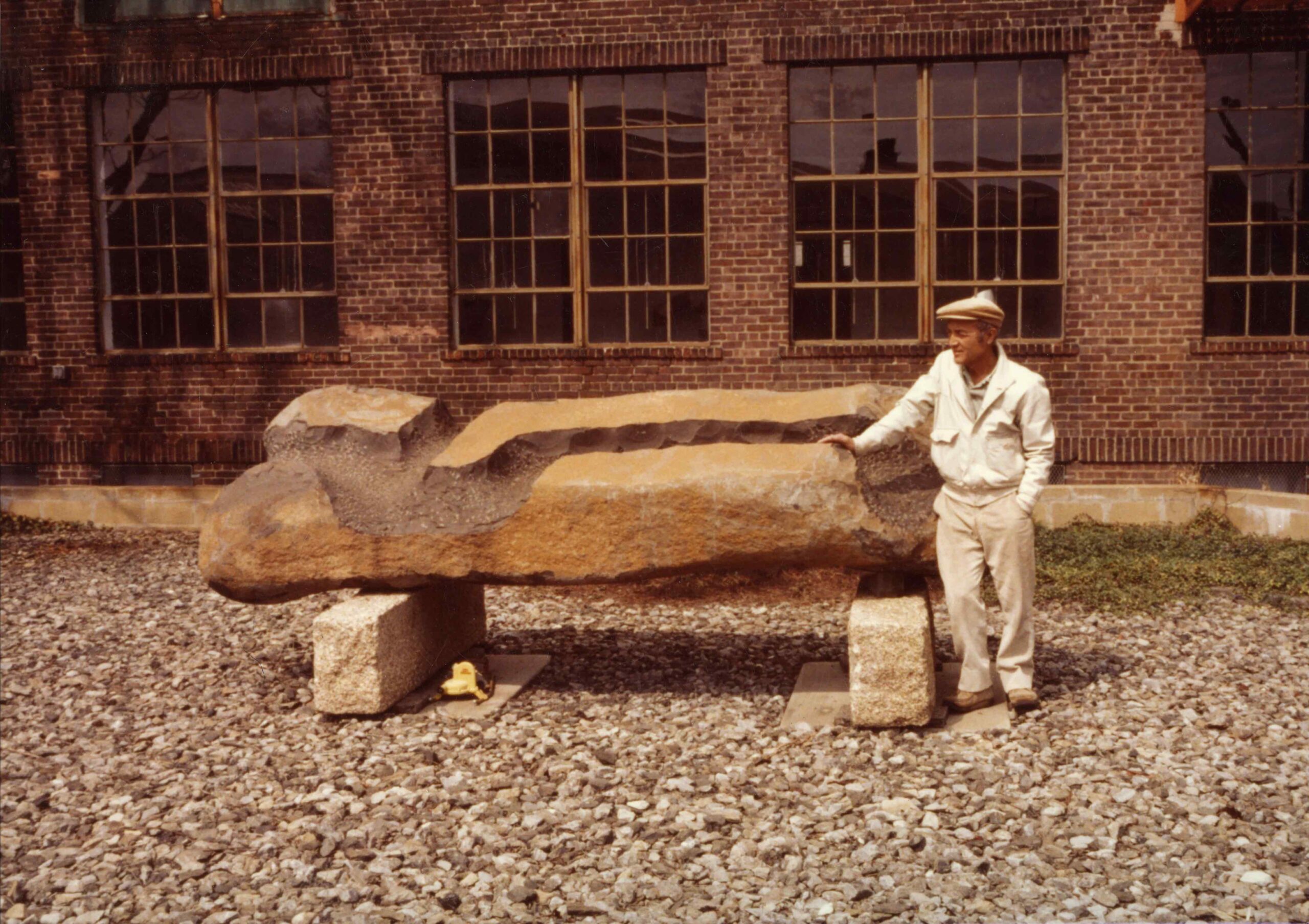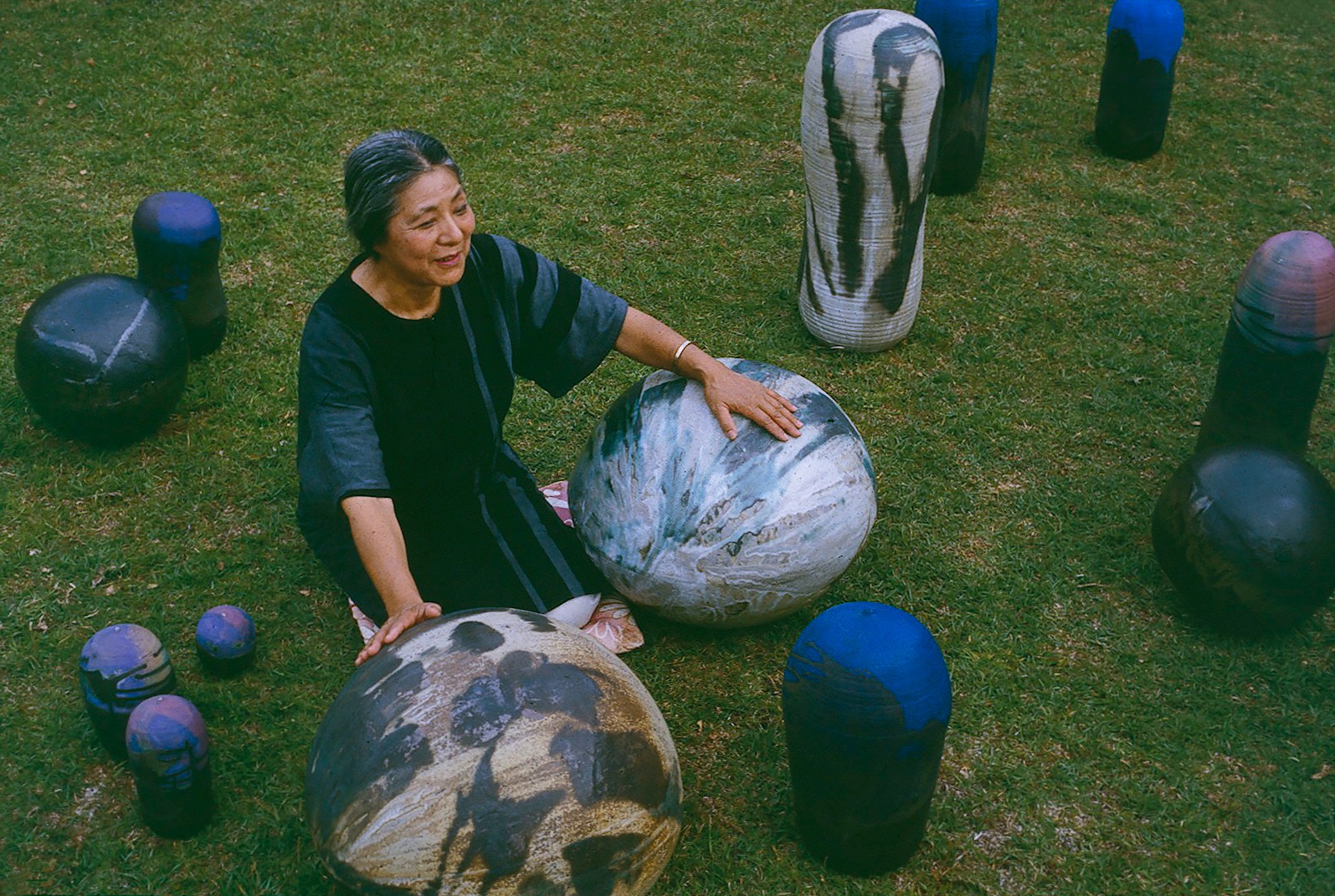The Noguchi Museum in Queens, New York, chartered as The Isamu Noguchi Foundation and Garden Museum, was the first museum in the United States designed by a living artist to show their own work, and reflects the diversity of his sculptural approach
 Photography by Nicholas Knight
Photography by Nicholas Knight
Words by Sonia Zhuravlyova
A red-brick industrial building from the 1920s in Queens, New York, has been home to Isamu Noguchi’s museum since he designed and built it in 1985. You might know Noguchi as the creator of the bamboo and rice paper Akari lamps, or as the man who crafted the massive bas-relief sculpture for the Associated Press building at 50 Rockefeller Plaza, but the two-storey museum, which he created to show his life’s work, reveals just how varied and versatile Noguchi artistic practice really was.
Noguchi, born to an Irish-American mother and a Japanese father in 1904, grew up between the two countries and his search for identity would inform his work throughout his life. ‘He was both struggling with, but also digging deep into, this idea of hybridity and in-betweenness,’ says the museum’s curator Kate Wiener. ‘His identity and ideas of home were complex, and they evolved many times throughout his life. He talked about himself as an immigrant of sorts, always belonging everywhere and nowhere.’
Noguchi began his artistic life as a classical sculptor, making ends meet with portrait sculpture and design commissions in New York. His practice evolved over time, as he travelled across the world – working with Constantin Brâncusi in Paris, discovering marble in Italy and learning ink-brush techniques in China – and he also spent much time in Japan, where he eventually established a studio. His wanderings led him to explore different methods and materials, including stainless steel, cast iron, balsa wood, bronze, sheet aluminium, basalt and granite. ‘I think his travel was about trying to connect to all kinds of global traditions and understand our shared sense of humanity and artistic practice across cultures,’ says Wiener.
 Photography featuring Isamu Noguchi with his sculpture Unmei (1970) in the garden at 32-37 Vernon Boulevard, Long Island City, NY (site that would eventually become The Isamu Noguchi Garden Museum), in the 1980s. The Noguchi Museum Archives, 04161. © The Isamu Noguchi Foundation and Garden Museum, NY / Artists Rights Society (ARS)
Photography featuring Isamu Noguchi with his sculpture Unmei (1970) in the garden at 32-37 Vernon Boulevard, Long Island City, NY (site that would eventually become The Isamu Noguchi Garden Museum), in the 1980s. The Noguchi Museum Archives, 04161. © The Isamu Noguchi Foundation and Garden Museum, NY / Artists Rights Society (ARS)
He saw himself a sculptor, but his work ranged from gardens, furniture (his coffee table, produced by Herman Miller, translated the biomorphic aesthetic of his sculptural work) and lighting designs to ceramics and architecture. ‘Even though he had these diverse interests, he always thought of them as being under the umbrella of sculpture. That was his specialty, even though he defined it so broadly. A stage set, a playground, a lamp and basalt stone could all fit under this idea of what sculpture is. But for him, that idea of sculpting materials and sculpting space, trying to understand how they could be used as catalysts for change or tools for thinking about the world in a different way, is what united so much of what is seemingly very diverse work,’ says Wiener.
Noguchi eventually relocated to a studio in Queens in 1961 and soon needed more space. He bought an empty factory building across the road, adding a concrete structure that now serves as both the entry pavilion and an indoor- outdoor gallery for his basalt works. He retained the exposed steel and wood beams of the old factory as well as the original metal ceiling and incorporated these into his design for the museum’s galleries and café. He also created a sculpture garden, planting it with trees that are indigenous to Japan, the US or both. His museum was unique in that it was the first in the United States established, designed and installed by a living artist to show their own work.
‘He was frustrated by traditional museum models. He didn’t want his work to go in a collection and then just be stowed away in a basement where people couldn’t see it. He didn’t initially set out to create a museum – he just had a surplus of sculptures and ended up buying a factory building across the street from his studio. And then he started filling it with his work and eventually kind of got the idea to renovate the space,’ explains Wiener.
 Photography by Macario Timbal featuring Toshiko Takaezu with pots in Hawaii, 1987
Photography by Macario Timbal featuring Toshiko Takaezu with pots in Hawaii, 1987
The ground floor and garden remain dedicated to Noguchi’s work while the second floor is used to show the works of his peers or those of modern artists. From 20 March, the museum will host a show celebrating the work of 20th- century American-Japanese ceramicist Toshiko Takaezu, showing everything from functional wares from the early 1950s to a constellation of monumental ceramics from her later period.
‘There’s an interesting resonance between their practices,’ says Wiener. ‘She was also an artist who embraced hybridity, and was trying to break down the distinctions between ceramics, sculpture and painting and how to work in this place of in-betweenness to create something radically new.’
Today, Noguchi’s museum is a remarkable testament to a life spent in search of artistic expression that is grounded in the belief in the life- enhancing power of sculpture. ‘For him, a lamp can be useful, but a stone sculpture and a garden can also be useful if they help you reorient your perspective on the world or help you think about nature or time or your relationship to other people differently,’ adds Wiener. ‘This was incredibly forward-thinking at the time and remains compelling to this day.’
Toshiko Takaezu: Worlds Within is at the Noguchi Museum in New York from 20 March 2024 noguchi.org
Get a curated collection of design and architecture news in your inbox by signing up to our ICON Weekly newsletter


















